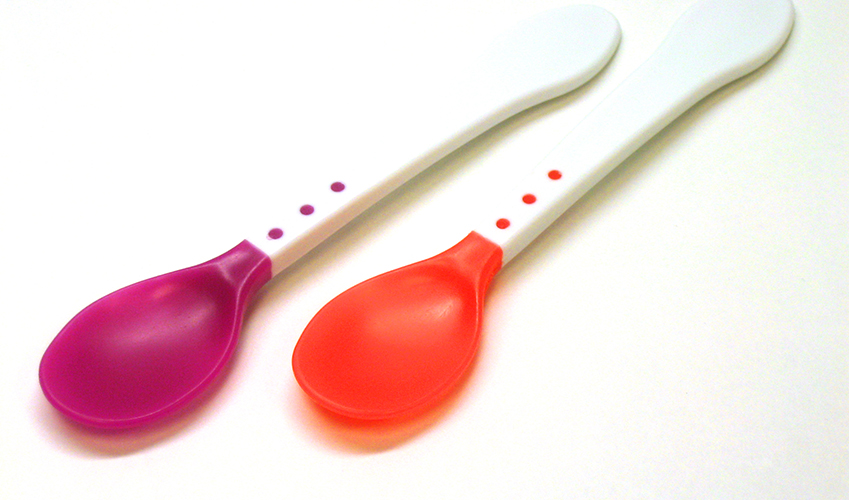Consumer products made with TPEs offer benefits that add both consumer appeal and safety benefits. A soft-touch surface, for example, adds a pleasant feel as well as improved grip even when wet. TPEs can also incorporate a thermochromic additive that changes color depending on the temperature. This temperature-sensing color shift can differentiate a product and even provide a safety benefit by indicating temperature.
Visual Cues
In an infant feeding spoon, for example, the bowl of the spoon is made with a soft, flexible TPE that changes color when the food in the spoon is too hot for an infant to eat without burning his or her mouth. TPEs are easy to tint with a wide range of colors and effects, including thermochromatic pigments. The spoon bowl is made in dark, vibrant colors, combined with the heat-sensitive additive, which causes the spoon bowl to turn clear when too hot.

How It Works
Soft, flexible TPEs can be easily overmolded onto hard substrates. The soft spoon bowl is overmolded onto the hard polypropylene (PP) spoon, creating a soft feel for the infant's mouth. Specialized chemistries enable TPEs to adhere to many different plastic substrates, including PP, polycarbonate (PC), acrylonitrile-butadiene-styrene (ABS), PC/ABS, copolyester, polyamide, and polystyrene.
Take a look at actual results in the video below:
